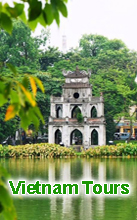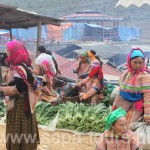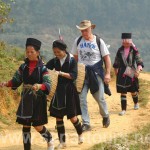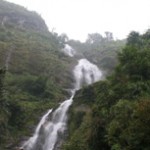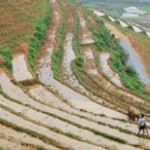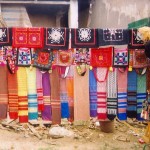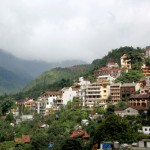History of Sapa
It is most likely that Sa Pa was first inhabited by highland minorities of the Hmong and Yao groups, as well as by smaller numbers of Tày and Giay, these being the four main minority groups still present in SaPa district today. The Kinh (lowland Vietnamese) never originally colonised this highest of Việt Nam’s valleys, which lies in the shadow of Phan-Xi-Pǎng (Fansipan, 3143 meters), the highest peak in the country.
It was only when the French debarked in highland Tonkin in the late 1880s that Sa Pa, or Chapa as the French called it, began to appear on the national map. In the following decade, the future site of Sa Pa town started to see military parties as well as missionaries from the Société des Missions Etrangères de Paris (MEP) visit. The French military marched from the Red River Delta into the northern mountainous regions as part of Tonkin’s ‘pacification’. In 1894-96 the border between China and Tonkin was formally agreed upon and the Sa Pa area, just to the south of this frontier, was placed under French authority. From 1891 the entire Lao cai region, including Sa Pa, came under direct colonial military administration so as to curtail banditry and political resistance on the sensitive northern frontier.
The first permanent French civilian resident arrived in Sa Pa in 1909. With its attractive continental climate, health authorities believed the site had potential. By 1912 a military sanatorium for ailing officers had been erected along with a fully fledged military garrison. Then, from the 1920s onwards, several wealthy professionals with enough financial capital also had a number of private villas built in the vicinity.
At the end of the Second World War a long period of hostilities began in Tonkin that was to last until 1954. In the process, nearly all of the 200 or so colonial buildings in or around Sa Pa were destroyed, either by Việt Minh sympathisers in the late 1940s, or, in the early 1950s by French air raids. The vast majority of the Viet population fled for their lives, and the former town entered a prolonged sleep.
In the early 1960s, thanks to the New Economic Zones migration scheme set up by the new Socialist regime, new inhabitants from the lowlands started to migrate to the region.
The short 1979 occupation of the northern border region by Chinese troops had little impact on Sa Pa town, but did force the Kinh (lowland Vietnamese) population out for a month.
In 1993 the last obstacle to Sa Pa’s full rebirth as a prominent holiday destination was lifted as the decision was made to open the door fully to international tourism. Sa Pa was back on the tourist trail again, this time for a newly emerging local elite tourist crowd, as well as international tourists.
In 2006, the Chairman of The People’s Committee of Sapa Province was elected to The Communist Party Central Committee as the youngest ever member (born in 1973).
Also see:
- Hanoi’s traditional craft villages join World Crafts Network
- Yen Tu Spring Festival opens
- Hon Dung community tourism village recognized
- Sapa Việt Nam’s mountain range in top place to travel in 2019
- The Southern Fruit Festival 2017 will last for 3 months
- Cheo plays to grace Ha Noi stage every Saturday
- Vietnam among top 10 budget honeymoons: Lonely Planet
- Celebrate Lunar New Year in Sapa
- Ideal Places For Travelling By Motorbike In Vietnam
- Da Lat And Sa Pa Among Best New Destinations In Asia
- Homestay in Ta Van Village, Sapa
- Thang co’ – A traditional dish of Mong ethnic group











